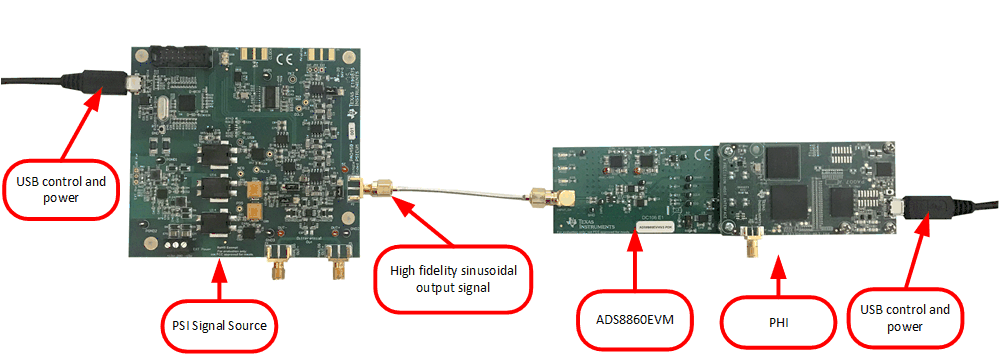SBAU213A September 2013 – July 2020
6.2 Using the Optional Precision Signal Injector (PSI)
The ADS8860 has excellent AC specifications (typically SNR = 93 dB, THD = -108 dB). Many commercial signal generators cannot generate a signal with low enough noise and distortion to properly evaluate this device. Texas Instruments offers a evaluation module that acts as a high-fidelity signal generator (for f = 2 kHz). This signal generator uses a 2-kHz, fifth-order, band-pass filter to generate a very low noise, low distortion signal. Jumper positions for single-ended operation are provided in Table 6-1. See the PSIEVM for more information on this EVM.
 Figure 6-3 PSI
Signal Generator Connection
Figure 6-3 PSI
Signal Generator Connection| Jumper | Position | Comment |
|---|---|---|
| JP1 | FILT | Connects a 2-kHz filter |
| JP3 | FILT | Connects a 2-kHz filter |
| JP4 | VCM | Common-mode control for single-ended signals enabled |
| JP8 | GND | Common-mode control for differential signals disabled |